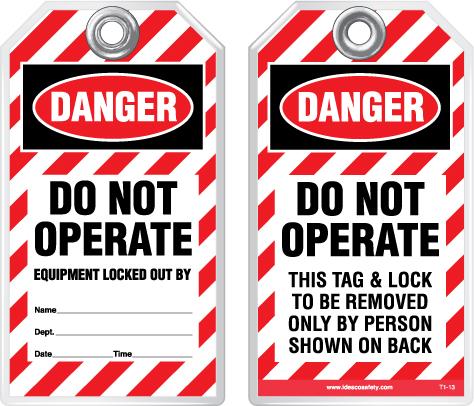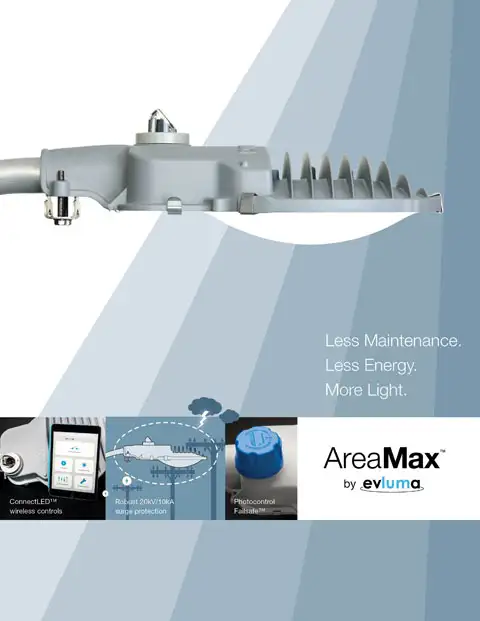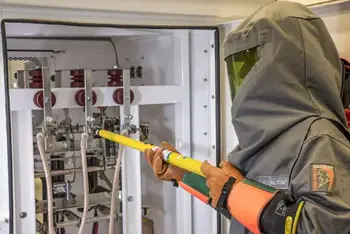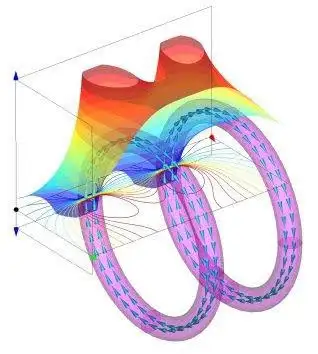Protective Relay
By R.W. Hurst, Editor
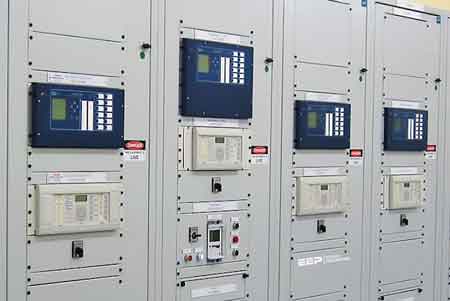
Substation Relay Protection Training
Our customized live online or in‑person group training can be delivered to your staff at your location.

- Live Online
- 12 hours Instructor-led
- Group Training Available
Download Our OSHA 3075 Fact Sheet – Understanding Electrical Hazards in the Workplace

- Learn the effects of electric current on the human body
- Understand OSHA safety standards and protective devices
- Discover essential lockout/tagout and grounding practices
A protective relay detects electrical faults and initiates circuit breaker operations to isolate the issue. It helps prevent equipment damage, ensures safety, and maintains system stability. It is crucial for ensuring the accuracy of power system protection and fault response.
What is a Protective Relay?
The protective relay is an essential component in electrical protection systems, designed to detect abnormalities such as overloads, faults, or equipment malfunctions within electrical circuits. It identifies abnormal electrical conditions and triggers protective actions.
✅ Detects faults like overcurrent, undervoltage, or short circuits
✅ Sends trip signals to breakers to isolate faulty sections
✅ Enhances reliability and safety of power systems
A protective relay plays a crucial role in safeguarding equipment and ensuring power system stability by triggering isolation mechanisms to prevent widespread damage. For electrical professionals, understanding these devices is fundamental, as they not only prevent costly outages but also enhance workplace safety and system reliability. By swiftly responding to irregular conditions, the device helps maintain continuity. It protects both personnel and assets, making expertise in its functions and applications vital for those managing modern electrical infrastructures.
Request a Free Electrical Protection Training Quotation
Why Protective Relays Matter
In modern power system protection schemes, protective relays operate as part of an integrated network of components designed to detect, isolate, and respond to electrical faults. These units work in close coordination with current transformers (CTs) and potential transformers (PTs), which provide scaled-down, accurate measurements of current and voltage for analysis. Based on this input, the device processes the data and, when abnormal conditions are detected, sends a trip signal to a circuit breaker to interrupt power flow and prevent damage. In digital systems, protective relays also communicate with control centers and other protective relays using standardized communication protocols such as IEC 61850. This integration ensures fast, selective, and coordinated responses to faults, minimizing equipment damage and maintaining system stability. Their role extends beyond simple fault detection:
Sign Up for Electricity Forum’s Electrical Protection Newsletter
Stay informed with our FREE Electrical Protection Newsletter — get the latest news, breakthrough technologies, and expert insights, delivered straight to your inbox.
-
They improve system reliability by isolating faults quickly.
-
They enhance workplace safety by protecting personnel.
-
They maintain continuity of service in power systems.
For electrical professionals, expertise in protective relays is fundamental to modern infrastructure.
How Protective Relays Work
Protective relays operate as part of integrated power protection schemes. Working alongside current transformers (CTs) and potential transformers (PTs), they receive accurate, scaled-down current and voltage measurements.
Step-by-step process:
-
It measures current, voltage, or impedance.
-
It analyzes data against set thresholds.
-
If abnormal conditions occur, the device issues a trip command.
-
The circuit breaker isolates the faulty section.
In digital systems, relays also communicate with control centers and other devices using standards such as IEC 61850, enabling fast, coordinated fault response.
Protective Relay Types
There are several types of protective relays, each with its specific applications and operation principles. The three main categories are electromechanical devices, solid-state, and digital. Electromechanical types have been used for decades and rely on mechanical movements to operate. A Solid-state device, on the other hand, uses semiconductor devices for its operation. Ultimately, a digital protective relay utilizes microprocessors to execute protection functions, providing enhanced accuracy, flexibility, and communication capabilities.
Types of Protection: Categories, Pros, and Applications
| Type | Description | Pros | Example Applications |
|---|---|---|---|
| Electromechanical | Operates using magnetic fields and mechanical motion. | Rugged, proven technology, easy to maintain | Older substations, legacy systems |
| Solid-State | Uses analog electronic components (no moving parts). | Faster than electromechanical, moderate accuracy | Intermediate-level protection systems |
| Digital (Microprocessor) | Uses software algorithms and digital signal processing. | High accuracy, multifunctional, communication-ready | Modern substations, smart grid systems |
| Numerical | Advanced digital relay with self-testing and event recording. | Superior diagnostics, flexibility, integration-ready | IEC 61850-compliant smart grids |
The protective relay serves as the backbone of power system protection. Its primary function is to identify abnormal conditions, such as overcurrent, under-voltage, or earth faults, and initiate a response to isolate the affected area. This is typically done by sending a trip signal to a circuit breaker, which then interrupts the flow of electricity and protects the system from damage. By detecting and isolating faults, a relay plays a crucial role in maintaining the reliability and safety of electrical grids.
Key Protective Relay Functions (with ANSI Device Numbers)
They perform specific fault-detection functions, many of which are defined under ANSI standard C37.2. Examples include:
-
Overcurrent Protection (ANSI 50/51): Detects excessive current; uses IDMT (Inverse Definite Minimum Time) or instantaneous tripping curves. Refer to our fault current calculation guide for additional details.
-
Distance Protection (ANSI 21): Measures impedance to a fault; common in transmission line protection.
-
Differential Protection (ANSI 87): Compares current at two points; detects internal faults in transformers or generators.
-
Undervoltage/Overvoltage (ANSI 27/59): Detects abnormal voltage levels to avoid equipment stress or failure.
-
Earth Fault Protection (ANSI 50G/51G): Detects fault current to ground to prevent fires and ensure personnel safety.
Relay Coordination and System Selectivity
Protective relays do not operate in isolation—they work in coordination with circuit breakers and other protective relays to ensure selective and dependable system protection.
Protection coordination ensures that only the nearest protective relay trips for a fault, preventing unnecessary outages and limiting disruption to healthy parts of the system. This is achieved through methods such as time grading, current discrimination, and zone overlap control.
Selectivity is the principle that faults should be isolated at the closest point, avoiding cascading failures across the network. Settings and trip schemes are carefully designed to strike a balance between dependability (tripping when required) and security (avoiding nuisance trips).
When selecting and applying protective relays, several key factors must be evaluated:
-
Type of protection required (overcurrent, distance, differential, etc.)
-
Operational characteristics of the device
-
System voltage and current ratings
-
Available communication and integration options
By properly coordinating relays and tailoring their settings, engineers ensure reliable fault isolation, system stability, and the safety of both equipment and personnel.
Overcurrent protection is a critical function provided by a protective relay. When the current in a circuit exceeds the pickup value, the unit contacts initiate a trip signal, causing the circuit breaker to open and isolate the fault. This ensures that high voltages and currents do not cause significant damage to equipment or pose a risk to human safety.
Electricity Today T&D Magazine Subscribe for FREE

- Timely insights from industry experts
- Practical solutions T&D engineers
- Free access to every issue
Distance and differential relays are two other common types. Distance relays, also known as impedance relays, are typically used to protect transmission lines. They measure the impedance between the device location and the fault, tripping the circuit breaker if the impedance falls below a set value. Differential kinds, in contrast, monitors the difference in current between two points within a protected zone. When this difference exceeds a specified threshold, the protective relay operates, indicating an internal fault that requires isolation.
Sample Comparison Table: Overcurrent vs. Distance Relays
| Feature | Overcurrent | Distance |
|---|---|---|
| Sensing Mechanism | Measures current magnitude | Measures impedance (V/I) to fault |
| ANSI Function Number | 50/51 | 21 |
| Application Area | Low-voltage and distribution systems | High-voltage transmission lines |
| Coordination Method | Time/current grading | Zone-based impedance coordination |
| Response Speed | Fast (milliseconds) | Fast, but zone-dependent |
| Key Advantage | Simple, proven, widely applied in distribution | Provides location-sensitive protection, ideal for long lines |
Performance Criteria for Protective Relays
To be effective, protective relays must meet key operational benchmarks that ensure fast and reliable fault detection:
Speed: Must respond within milliseconds to isolate faults before damage escalates.
Sensitivity: Capable of detecting low-level or evolving faults with accuracy.
Reliability: Maintains consistent operation under all system conditions, even during stress events.
These criteria ensure that they provide dependable protection without delays, safeguarding both equipment and personnel from harm.
Standards and Best Practices
Protective relay design and use follow global standards to ensure consistency and safety:
-
IEEE C37 series – defines device functions and testing requirements.
-
IEC 60255 – international standard for performance and reliability.
-
IEC 61850 – communication protocols for digital devices in smart grids.
Following these standards ensures interoperability and dependable operation.
Real-World Applications
Protective relays are essential across power networks:
-
Substations: Ensure safe and selective tripping for high-voltage systems.
-
Industrial facilities: Protect motors, transformers, and critical processes.
-
Transmission & Distribution (T&D): Maintain stability and continuity across long-distance grids.
In every application, they reduce risk, extend equipment lifespan, and safeguard both people and assets.
Frequently Asked Questions
How fast do protective relays operate?
Most devices respond within milliseconds, minimizing damage and preventing cascading failures.
What is the difference between electromechanical and digital relays?
Electromechanical relays rely on moving parts and magnetic fields, whereas digital relays utilize microprocessors, offering greater speed, flexibility, and communication capabilities.
Why is relay coordination important?
Coordination ensures only the closest device trips during a fault, preventing unnecessary outages and maintaining service reliability.
Related Articles






